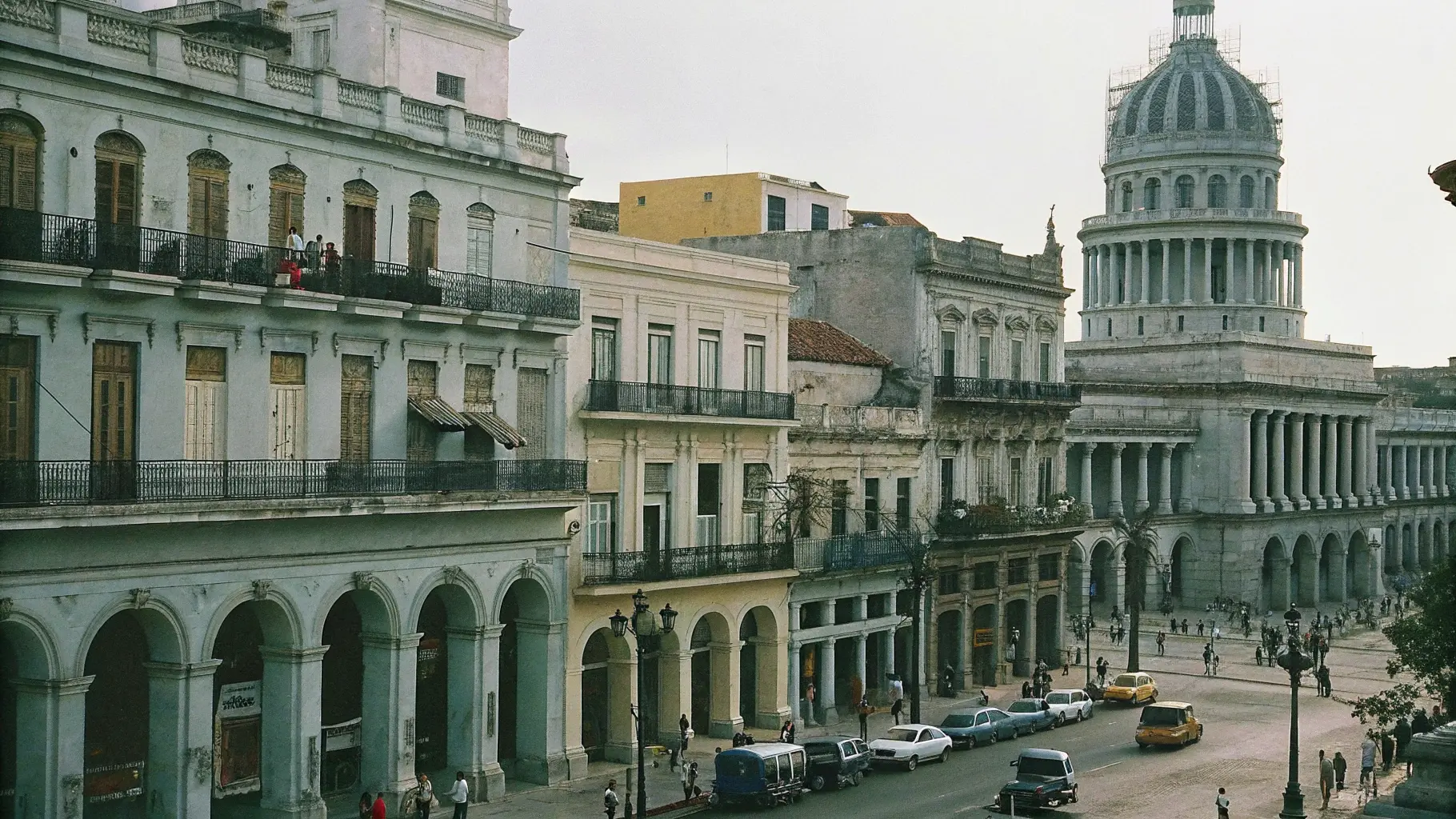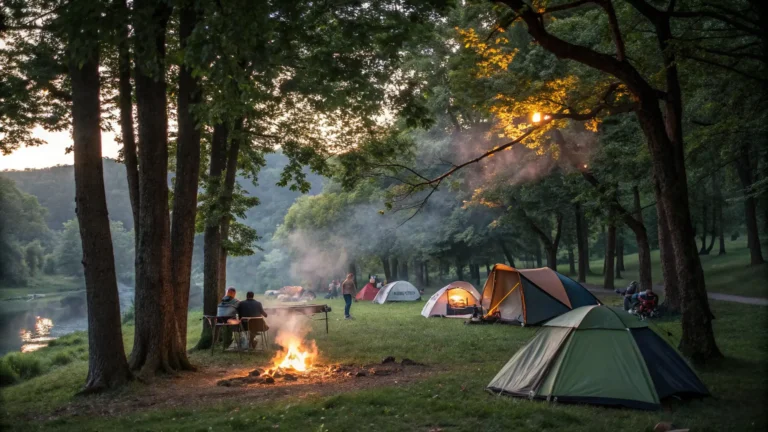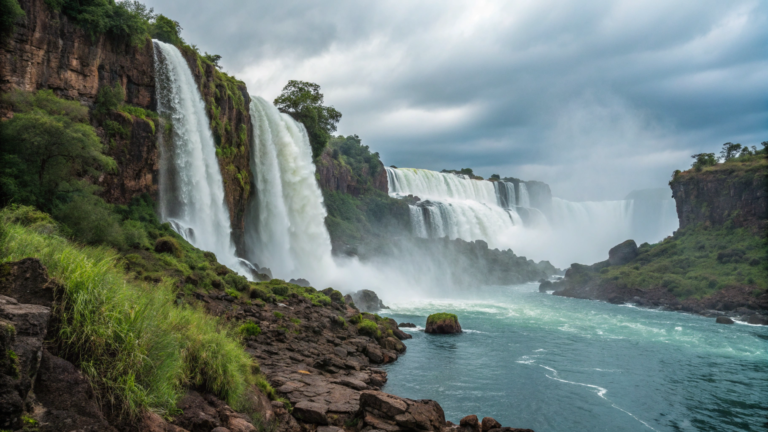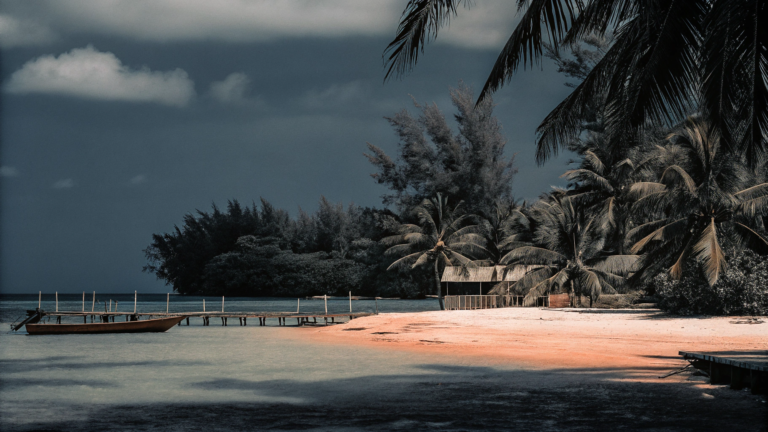Cuba Capital Landmarks How to Dominate Havana’s Best!
Last updated on May 26th, 2025 at 01:13 am
I’m about to tell you something that’ll save you from making the same expensive mistake I made.
Picture this: October 2017, my second night in Havana. I’d blown $120 on some “exclusive” landmark tour that promised to show me the “real Cuba.” What I got was a guy in an air-conditioned van driving me past the same tourist spots, talking at me for four hours while I stared through tinted windows like I was in some kind of museum exhibit.
Meanwhile, my roommate at the casa particular – this backpacker from Germany named Klaus – had spent his day wandering around with a hand-drawn map from our host’s grandmother. He came back with stories about underground jazz clubs, a secret rooftop bar overlooking the cathedral, and an invitation to some family’s Sunday dinner.
That night, as I sat there feeling ripped off and disconnected, Klaus looks at me and says, “Dude, you’re doing this all wrong. The landmarks aren’t the destination – they’re just the excuse to get lost in the right neighborhoods.”
He was absolutely right. And after five more trips to Havana (including one where I brought my parents), I’ve cracked the code on how to actually experience these Cuba capital landmarks without falling into the tourist traps that drain your wallet and rob you of authentic experiences.
The Old Havana Reality Check Nobody Talks About
Here’s what every guidebook gets wrong about Old Havana: they make it sound like some perfectly preserved colonial theme park. The truth? It’s a crumbling, chaotic, absolutely gorgeous mess where half the buildings look like they might collapse tomorrow, and somehow that makes it even more beautiful.
I was walking through there last April with my buddy Mike (his first Cuba trip), and he stops dead in his tracks on Calle Obispo. There’s this building where the facade is literally held up with wooden beams, but the ground floor has been converted into this incredible art gallery. Three kids are playing dominoes on the steps while their grandmother watches from a balcony that’s probably older than our country.
“This place doesn’t make sense,” Mike says. And that’s exactly the point.
The UNESCO designation covers 900+ buildings across four and a half centuries, but the stats don’t capture the smell of coffee drifting from hidden courtyards, or the way sound bounces off those narrow stone streets, or how the light changes color as it filters through weathered shutters.
Plaza de Armas – The Gateway Drug
This is where most people start, and honestly, where most people mess up. They spend twenty minutes taking selfies and move on. Big mistake.
I’ve probably spent more time in this square than anywhere else in Havana, and I’m still discovering new details. Like the way the morning light hits the Governor’s Palace at exactly 8:47 AM (I’ve timed it), creating these incredible shadows across the cobblestones. Or how the acoustics work – if you stand in the exact center and whisper, someone across the square can hear you perfectly.
The weekend book market is where things get interesting. Yeah, you’ll find the usual Che posters and “Buena Vista Social Club” CDs, but dig deeper. I once found a 1958 Havana telephone directory, complete with ads for businesses that disappeared overnight when the revolution hit. Cost me three bucks and tells more about pre-revolutionary Cuba than any museum exhibit.
The insider moves for Plaza de Armas:
- Show up at 7 AM when the street sweepers are finishing – you’ll have it mostly to yourself
- The chess players arrive around 9 AM near the northeast corner
- El Templete isn’t just a monument – there’s usually an old-timer there who knows every story about the square
- Skip the Museum of the City unless it’s raining
Here’s something I learned by accident: bring a notebook. I started sketching the architecture to kill time, and three different locals came over to tell me stories about buildings I was drawing. One old guy, Ernesto, turned out to be a retired architect who’d worked on the restoration projects. Two hours later, I had a private tour from someone who’d actually rebuilt half the square.
Cathedral Square – Beyond the Instagram Shot
Every travel blogger posts the same photo of Havana Cathedral, and every travel blogger misses the real story. Yeah, the baroque facade is stunning, especially when the afternoon light turns those limestone blocks golden. But the cathedral is just one piece of a much larger puzzle.
The square is actually shaped like a funnel, designed to channel trade winds through the space. Sit on the steps of the cathedral around 4 PM and you’ll feel it – this natural air conditioning system that Spanish colonial architects figured out 300 years ago.
I was there during Easter week in 2019, and the whole square transformed. Local families brought folding chairs and coolers, kids ran around in their Sunday clothes, and the cathedral steps became this impromptu community center. That’s when I realized: tourists see a landmark, locals see their neighborhood.
The surrounding colonial mansions house some incredible museums, but here’s what nobody tells you – the best views are from the restaurant terraces on the second floors. Order a mojito at El Patio (overpriced but worth it for the view) and you can watch the whole square play out below you like a movie.
Plaza Vieja – The Resurrection Story
This square tells you everything you need to know about Cuba’s complicated relationship with preservation. In the 1990s, it was basically a parking lot surrounded by ruins. Soviet-era “urban planning” had destroyed most of the colonial architecture, and what was left was falling apart.
Then the restoration began, funded partly by tourism revenue and partly by international aid. Now it’s this vibrant community space again, but with obvious signs of the struggle – some buildings are perfectly restored, others are still propped up with metal beams.
The Camera Obscura in the northeast corner gives you a 360-degree view of the city, projected onto a white dish in a dark room. It’s an old technology, but seeing Havana reflected that way – this living, breathing organism of a city – is pretty magical. Plus, at five bucks, it’s the cheapest way to get elevated views of the whole capital.
The brewery (Factoria Plaza Vieja) is touristy but serves decent beer, and more importantly, it’s where locals come to watch football matches. I’ve seen more authentic Cuban passion during a Real Madrid game there than in any folkloric show.
Revolutionary Sites – Where History Gets Complicated
The revolutionary landmarks are where things get politically charged, and honestly, that’s what makes them interesting. You can’t understand modern Cuba without grappling with how these events shaped everything that came after.
Plaza de la Revolución – The Power of Empty Space
The scale of this place is genuinely intimidating. Standing in the middle of 72,000 square meters of empty concrete, surrounded by those massive government buildings, you get a visceral sense of how power works in Cuba.
The José Martí Memorial shoots up like a giant concrete exclamation point, and the Che Guevara mural on the Ministry of Interior building watches over everything with those iconic eyes. But here’s what photos don’t capture: the silence. Even with traffic around the edges, there’s this weird acoustic dead zone in the center where your voice just disappears.
I brought my dad here in 2020 (right before COVID shut everything down), and he’s a pretty conservative guy who’s not particularly sympathetic to Cuban politics. But standing there, looking up at that memorial, he got quiet for a long time. Finally he says, “You can disagree with what they did, but you can’t argue with the ambition.”
The elevator up the Martí Memorial costs five bucks and it’s worth every peso. The city spreads out below you in all directions – the colonial core, the 1950s Vedado neighborhood, the Soviet-era apartment blocks, the new development creeping up the coast. You can see how five centuries of different influences created this impossible city.
Revolutionary site breakdown:
LocationEntry FeeCrowd LevelBest TimeHidden GemPlaza de la RevoluciónFreeLowSunsetMemorial elevatorRevolution Museum$8HighEarly morningGranma boat storiesMartí Memorial$5MediumLate morning360° city views
Museum of the Revolution – Propaganda Paradise
The former Presidential Palace houses the most politically charged museum in Cuba, and that’s exactly why it’s fascinating. This is Cuba’s version of its own history, told through artifacts, photos, and exhibits that range from genuinely moving to hilariously over-the-top.
The Granma yacht replica outside is supposedly the actual boat that brought Castro and 81 other revolutionaries from Mexico in 1956. Whether it’s the real deal or not (and there’s some debate about that), standing next to it gives you a sense of how insane that mission was. Eighty-two guys in a boat, planning to overthrow a government.
Inside, the exhibits tell the story from the Cuban perspective, which means lots of heroic narratives and anti-American sentiment. But buried in all that propaganda are some genuinely fascinating artifacts – Che’s beret, Castro’s rifle, personal letters between revolutionary leaders, battle plans drawn on napkins.
My favorite part is the Hall of Mirrors on the second floor, where they’ve recreated the ballroom from the palace’s presidential days. It’s this incredible contrast – crystal chandeliers and marble floors in a building that now celebrates the overthrow of the people who built it.
Architectural Gems That Tell Stories
Havana’s architecture is like reading a history book written in stone and concrete. Every era left its mark, creating this incredible layered effect that you can’t find anywhere else.
El Capitolio – The Comeback Kid
This building has been through everything. Built in the 1920s as Cuba’s capitol, it became a symbol of American influence, then revolutionary rejection of that influence, then slow decline, and finally resurrection. The restoration project that finished in 2019 cost millions and took forever, but walking through those marble halls now, you understand why they saved it.
The guided tours are excellent, but here’s the insider move: ask specifically for Roberto if he’s working that day. This guy knows every story about every room, including the scandalous stuff they don’t put in the official history. He once told me about secret tunnels, hidden gambling rooms, and affairs between senators and opera singers that would make Netflix executives jealous.
The Academy of Sciences now housed there isn’t particularly exciting, but the building itself is stunning. The main rotunda under the dome has this incredible acoustic property – if you stand in the exact center and speak normally, your voice carries perfectly to every corner.
Gran Teatro – Culture Palace
Built in 1915 as the social center for Havana’s elite, this neo-baroque beauty survived revolution, economic collapse, and decades of neglect. The Cuban National Ballet still performs here, and catching a show is one of those experiences that reminds you why live performance matters.
I’m not a ballet guy. Never was. But I was there in 2018 when they performed “Giselle,” and something about watching those dancers move in that historic space, with the ghosts of a century of performances surrounding them, was genuinely moving.
The theater itself is the real star. The acoustics are so perfect that during intermission, conversations from the lobby carry perfectly into the upper balconies. The chandelier in the main hall weighs over a ton and somehow survived both revolution and hurricane.
Sacred Spaces in a Secular State
Cuba’s relationship with religion is complicated, but the churches remain some of the most beautiful and peaceful spaces in Havana.
Havana Cathedral – Baroque Beauty
The Cathedral of the Virgin Mary of the Immaculate Conception (yeah, that’s the full name) represents Cuban baroque at its most ornate. The facade changes character completely depending on the light – golden and welcoming in the morning, dramatic and mysterious in the afternoon, romantic and intimate in the evening.
Inside, it’s surprisingly intimate for such a grand exterior. The acoustics make whispered prayers echo through the space, and during evening mass, the whole cathedral fills with this warm, golden light that makes even non-believers feel something spiritual.
Christopher Columbus was supposedly buried here for a while, though Spain claims they moved his remains to Seville, and the Dominican Republic insists they have the real ones. Honestly, the mystery is more interesting than the facts.
San Francisco Basilica – The Musical Church
This former basilica now serves as both museum and concert hall, and if you can catch one of their acoustic performances, it’s absolutely worth it. I heard a string quartet there playing Bach, and the way those stone walls held and shaped the sound was incredible.
The bell tower offers different views than the tourist spots – you can see across the harbor to the Morro Castle, down into the courtyards of Old Havana, and out to the modern city beyond. It’s usually empty up there, which makes it perfect for actually thinking about what you’re seeing instead of just photographing it.
Military Fortresses – Defense Against Everything
El Morro Castle – Guardian of the Harbor
Castillo de los Tres Reyes del Morro has been protecting Havana’s harbor since 1630, and it looks like it could still do the job. The walls are incredibly thick, the position is perfectly strategic, and the lighthouse still guides ships into port.
The 9 PM cannon ceremony is touristy as hell, but it’s also genuinely fun. They fire this massive cannon that echoes across the water, and for a moment you can imagine what it must have sounded like when pirates were actually approaching these waters.
Climbing to the lighthouse gives you the best harbor views in the city, and unlike the tourist viewpoints, you can actually see how the defensive system worked. The harbor entrance is narrow, easily controlled by cannons from multiple positions.
La Cabaña Fortress – Where Decisions Were Made
This 18th-century fortress served as Che Guevara’s headquarters immediately after the revolution, and walking through those rooms where major historical decisions got made feels surreal. The fortress is huge – it could house thousands of soldiers – and the views across the harbor to Havana are spectacular.
The evening cannon ceremony here is more elaborate than El Morro’s, with period costumes and historical reenactment. It’s cheesy and awesome simultaneously, and the locals seem to enjoy it as much as the tourists.
Military fortress rankings:
- La Cabaña – Historical significance and elaborate ceremonies
- El Morro – Classic lighthouse views and authentic cannon firing
- La Punta – Smaller crowds, more intimate experience
- Royal Force – Oldest fortress in the Americas, often overlooked
Navigation Secrets and Transportation Hacks
Getting around Havana efficiently requires understanding the city’s logic, which isn’t always obvious.
The Walking Strategy
Old Havana is designed for walking, but it’s not a grid system. The streets follow the original Spanish colonial layout, which means lots of curves, dead ends, and unexpected connections. Getting lost is part of the experience, but here are some navigation tricks:
The harbor is always north, so if you can see water, you know which direction you’re facing. The Capitol building’s dome is visible from most of Old Havana, making it a perfect landmark for orientation. And the street names are actually painted on building corners, though they’re often faded and hard to read.
Transportation Reality Check
Classic car tours look amazing on Instagram ($60-100 per hour), but you’re paying for the photo opportunity, not the convenience. For actually getting around efficiently, here’s what works:
Taxis are everywhere and relatively cheap for short distances. The yellow state taxis have meters, the private ones require negotiation. Walking is honestly the best option for the historic center – everything’s close together and you’ll discover incredible stuff between destinations.
Real daily transport costs:
- Walking: Free (but bring comfortable shoes)
- City bus: $0.50 per ride (if you can figure out the routes)
- Yellow taxi: $5-8 for cross-town trips
- Private taxi: $3-6 (negotiate beforehand)
- Classic car tour: $60-100/hour (pure tourism)
- Bike rental: $15-20/day (surprisingly practical)
Timing Your Visits
Early morning (7-9 AM) is magical in Havana. The light is soft, the crowds are minimal, and you can actually hear the city waking up. Late afternoon (4-6 PM) is also excellent, especially for photography.
Midday is brutal – hot, crowded, and harsh lighting. That’s when you want to be in museums, restaurants, or shaded courtyards.
Hidden Treasures and Local Secrets
Callejón de Hamel – Afro-Cuban Soul
This narrow alley in Centro Habana explodes with murals, sculptures, and installations celebrating Afro-Cuban culture. Sunday afternoon rumba sessions here are absolutely incredible – not some touristy show, but actual community celebration with local musicians, dancers, and artists creating spontaneous magic.
The art here tells stories about slavery, resistance, religion, and identity that you won’t find in official museums. It’s raw, political, spiritual, and beautiful all at once.
Hemingway’s Finca Vigía – Literary Pilgrimage
About 45 minutes outside central Havana, Finca Vigía preserves Ernest Hemingway’s house exactly as he left it when he died. You can’t go inside, but peering through the windows at his typewriter, his books, his hunting trophies, and his writing desk feels like stepping back in time.
His fishing boat “Pilar” sits in the garden, and you can imagine him heading out into the Gulf Stream to catch the marlin that inspired “The Old Man and the Sea.” The house is surrounded by Cuban countryside that hasn’t changed much since Hemingway’s time.
Photography That Captures the Real Cuba
Forget the Instagram clichés. The best photos in Havana happen when you stop trying to recreate shots you’ve seen online and start documenting what you actually experience.
Light and Shadow
Havana’s light is incredible, but it changes dramatically throughout the day. Early morning creates long shadows and golden tones. Midday is harsh but creates dramatic contrasts. Late afternoon brings that magical golden hour that makes everything look cinematic.
The narrow streets in Old Havana create amazing light shafts when the sun angles between buildings. Cathedral Square at sunrise is absolutely gorgeous and usually empty. The view from the Malecón at sunset is clichéd for a reason – it’s genuinely beautiful.
People and Permissions
Always ask before photographing people. Cubans are generally friendly about it, but respect matters. A smile and “¿Foto?” goes a long way. Some of the best portraits happen when you put the camera down and just talk to people first.
Street musicians usually appreciate tips more than photos, but they’re generally happy to pose if you’re contributing to their performance. Kids are naturally photogenic but always ask their parents first.
Making Your Cuba Capital Landmarks Experience Actually Count
After five trips and countless hours exploring every corner of this incredible city, here’s what I’ve learned: the landmarks are just the beginning. They’re excuses to wander through neighborhoods, reasons to start conversations with locals, and frameworks for understanding a culture that’s survived everything history could throw at it.
The Slow Travel Approach
Pick fewer landmarks and spend more time at each one. Sit in those squares. Watch how locals use the spaces. Talk to people. Get lost trying to find places. Some of my best Havana memories happened when I was completely lost and stumbled onto street festivals, neighborhood celebrations, or just incredible conversations with residents.
Essential landmarks for first-time visitors:
- Old Havana’s three main plazas (plan a full day, maybe two)
- Plaza de la Revolución and Museum of the Revolution (half day)
- El Morro and La Cabaña fortresses (half day)
- Capitol Building and Gran Teatro (half day)
- At least one neighborhood exploration day (Vedado or Centro Habana)
Building Authentic Connections
The Cuba capital landmarks you’ll visit represent way more than tourist attractions – they’re windows into a culture that’s survived conquistadors, pirates, revolution, economic collapse, and international isolation. Take time to understand not just what you’re seeing, but why it matters to the people who live there.
Learn some basic Spanish phrases. Bring a notebook to sketch or write in. Sit in parks and observe. Accept invitations when they come (and they will come). The best travel experiences happen when you stop being a tourist and start being a temporary resident.
Avoiding the Tourist Traps
Skip the expensive organized tours. Avoid restaurants with English menus near major landmarks. Don’t buy cigars from street vendors. Do eat at paladares (private restaurants) in residential neighborhoods. Do accept recommendations from your casa particular hosts. Do wander off the main tourist routes.
The real Cuba exists in the spaces between the landmarks, in the conversations with locals who aren’t trying to sell you anything, in the moments when you stop documenting your experience and start actually having it.
What’s your biggest question about exploring these incredible Cuba capital landmarks? Planning your first trip, or coming back for more? The comment section is where the real travel advice happens – drop your questions, share your experiences, and let’s help each other navigate this incredible city!








2 Comments